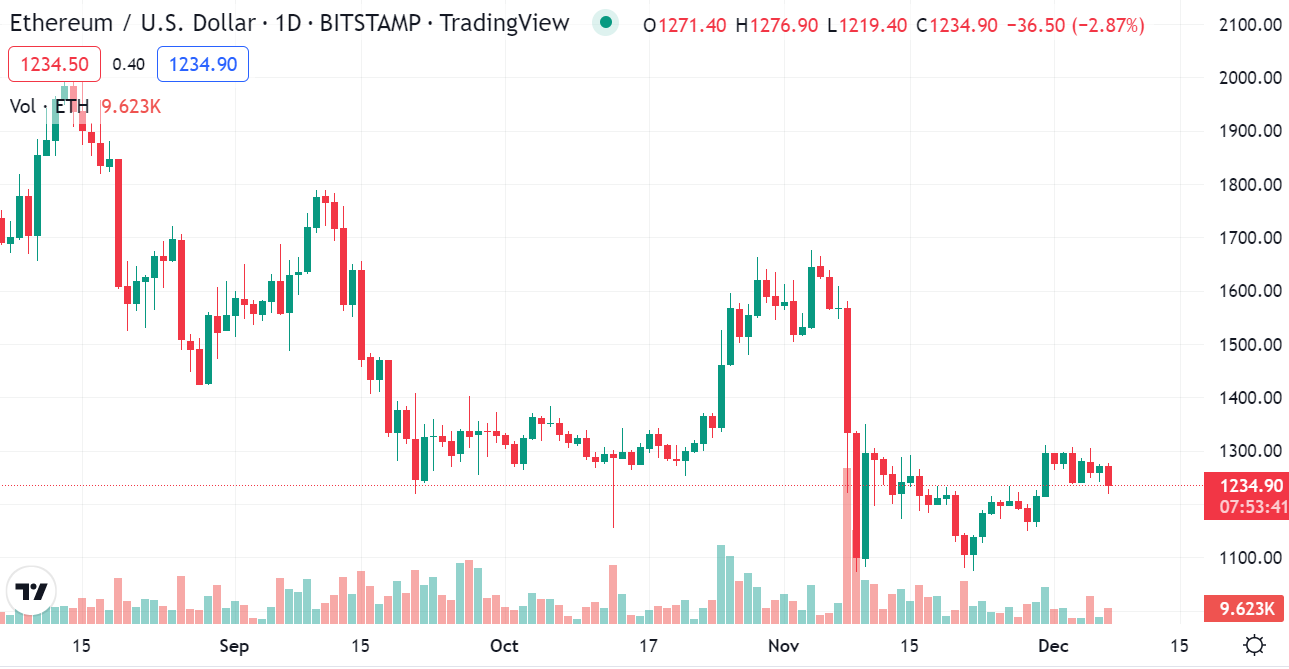Bitcoin remained reasonably steady at around the $16,850 mark as U.S. nonfarm productivity rose 0.6% for Q4 2022.
The slight quarter-on-quarter increase in productivity means that employers can raise wages without worrying about their contribution to inflation. This should be mildly bullish for investors in risky asset classes as it reduces the chance of a U.S. recession.
SponsoredNonfarm Productivity up as Pandemic Pressures Fade
The Q4 increase in productivity follows an adjusted Q3 growth of 0.8% that broke step with declines in the previous two quarters. Companies found themselves forking out extra money to attract and retain employees after the pandemic.
Nonfarm productivity measures labor efficiency for nonfarm employees producing goods and services. It is calculated by dividing an index of real output by an index of hours worked by every worker. Workers include employees and unpaid family workers.
Employers can invest in new equipment and systems to improve worker productivity without contributing to inflation.
Nonfarm Productivity Unable to Quell Recession Fears
The second-quarter increase in productivity should have been a welcome surprise after last week’s Nov. jobs numbers revealed that wage increases were outpacing efforts by the Federal Reserve to control inflation.
Instead, stock market futures declined in early trading. The declines came as fears of a 2023 recession extinguished the glimmer of hope offered by higher labor productivity.
SponsoredStock market futures fell in early trading. Dow Jones futures slumped 0.5%, S&P 500 futures declined by 0.7%, and Nasdaq futures slipped 1.1%.
Major cryptos, including Bitcoin and Ethereum, improved marginally after the announcement but mainly were flat at around $16,850 and $1,230.00, respectively, breaking step with the stock market.


While investors have experienced significant losses in their crypto investments over the past six months, the relatively stable price of Bitcoin in recently has indicated that the pain could be waning.
SponsoredStill, one technical analyst at Fairlead Strategies believes that the chances of a positive breakout are limited.
“We would respect lower highs and lower lows, which define the prevailing downtrend,” said Fairlead partner Katie Stockton. “While short-term momentum has improved for Bitcoin, the recent breakdown and declining trend-following gauges suggest it is best to stay on the sidelines.”
Inverted Treasury Curve Points to Imminent Recession
Despite recent labor and consumer data suggesting that the Fed’s aggressive tightening policies are bearing fruit, strong nonfarm wage growth in Nov. has led some investors to believe that the Fed will continue increasing interest rates for longer than initially expected, increasing the odds of an economic recession. The current federal funds rate is around 3.8%, following six consecutive hikes in 2022.

“All told, financial indicators point to a recession on the horizon,” said Azhar Iqbal of Wells Fargo to the bank’s clients on Dec. 7. He added that the so-called inverted treasury-yield curve, a predictor of inflation since 1960, is one indicator.
Yield curve inversions happen when investors flock to low-risk government investments like Treasury instruments, which pay yield at different fixed intervals.
In a market fraught with recession fears, investors clamor for longer-term treasury investments, like 10-year bonds. This increased demand drives yields of longer-term instruments downward.
As yields plummet, the difference or spread between the yield of short-term treasuries and long-term treasuries grows more negative, foreshadowing a recession.
The yield spread between two and 10-year treasuries at press time is -0.8%.
For Be[In]Crypto’s latest Bitcoin (BTC) analysis, click here.

